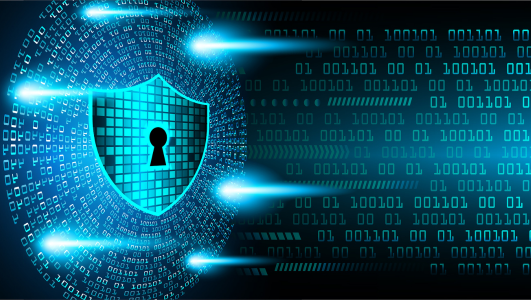Predicting future OT cyber security is like peering into a crystal ball looking for coherent answers through a transparent piece of glass. But we have a lot of experience encountering and striving against threat actors, so we can discern trends in hacker activities over the last year. While our crystal ball is not perfect, it holds some answers.
Here are some predictions for the cyber security issues we will encounter during the rest of 2024 and beyond:
Increased Connectivity and IIoT Integration
As industrial operations continue to integrate Industrial Internet of Things (IIoT) devices and enhance connectivity between OT and IT systems, the attack surface will continue to expand. The spread of interconnected systems and networks means more enticing entry points for cyber attackers. This trend will likely lead to an increase in the number and complexity of OT cyber threats. We recommend that all OT organizations undertake a serious network segmentation exercise. The Radiflow ecosystem includes firewall providers, TAP manufacturers, packet brokers, and even drop-in hardware to quickly create segments and cloak devices.
Sophistication of Threat Actors
Threat actors are becoming more sophisticated and well-funded. State-sponsored hackers, organized crime groups, and hacktivists are all investing in more advanced tools and techniques to breach OT environments. This sophistication will likely lead to more targeted and damaging attacks, such as ransomware and industrial espionage.
Ransomware Actors Exploiting Zero-Days
Ransomware groups are increasingly exploiting zero-day vulnerabilities, moving beyond the usual entry vectors like email. Criminal groups that previously lacked the skills to exploit unknown vulnerabilities are now doing so at scale. Organizations should prioritize vulnerability management and patching procedures to stay ahead in the cyber race.
AI and Machine Learning
Attackers are increasingly using artificial intelligence (AI) and machine learning (ML) causing defenders to respond in kind. For defenders, these technologies can enhance threat detection and response. For attackers, AI can be used to automate attacks, identify vulnerabilities more quickly, and develop evasive techniques. The near future will likely see a technological arms race between AI-driven defense mechanisms and attack methodologies.
Regulatory Changes and Compliance Requirements
Governments and regulatory bodies continue to introduce stricter cybersecurity regulations and compliance requirements for critical infrastructure and OT systems. For example, the NIS2 Directive comes into force in October. While government and industry attention to cyber issues can enhance security standards, it may also lead to increased complexity and costs for organizations.
Supply Chain Vulnerabilities
Supply chain attacks have become more common, as seen in high-profile cases like the SolarWinds incident. OT environments often rely on third-party vendors for software, hardware, and maintenance services, which can introduce vulnerabilities. Hackers increasingly target these supply chain weaknesses. See our whitepaper on supply chain security for details.
Legacy Systems and Infrastructure
Many OT environments still rely on legacy devices and systems that were not designed with cybersecurity in mind. These systems can be difficult to patch and secure, making them attractive targets for cyber attackers. The persistence of these legacy systems will continue to pose a significant challenge. One of the Radiflow partners specializes in cloaking legacy devices.
Human Factors
Human error and ignorance have always been major magnets for hackers and will remain major factors in cyber incidents. Social engineering attacks, such as phishing, will likely continue to exploit human vulnerabilities. As OT environments grow more complex, the need for specialized cybersecurity training and awareness is increasing. In fact, NIS2 requires suitable cyber training for all employees who handle data or are involved in digital processes. Holding senior management responsible for cyber incidents, NIS2 also requires cyber training for executives that will help guide them as they decide on cyber budgets and projects.
Staffing Shortages
We have written extensively of the issue of staffing shortages and the lack of cyber expertise. The need for such people continues to grow. As OT companies spend more attention on cyber security, they compete with the IT world over the scarcity of talent. Some OT organizations will turn to Managed Security Service Providers (MSSPs) to tend to their cyber needs.
Cyber-Physical Convergence
The convergence of cyber and physical systems means that cyber attacks can have real-world, physical consequences. Future threats will likely target this convergence, aiming to disrupt physical operations, damage equipment, and cause safety incidents.
Remote Access and Zero Trust Solutions
As remote operations expand, the need for secure remote access solutions is increasing. Such solutions must incorporate multi-factor authentication, end-to-end encryption, and secure tunneling protocols to safeguard remote access points. Zero trust security is now essential for securing OT environments. The Radiflow ecosystem includes partners who specialize in secure remote access and zero trust. We have integrated their capabilities into the Radiflow platform.
Risk Management Practices
With growing regulatory disclosures, the rise of AI-driven attacks, and ransomware incidents, operators will need to assess their risk profiles more frequently and accurately than ever. NIS2 calls for an ongoing risk management capability. Radiflow CIARA is a data-driven risk management platform that automatically ingests real data from ICS networks to evaluate actual risk to specific devices, zones, sites, and cross-site operations. CIARA performs prompt risk assessments fulfilling the requirements of NIS2 and determining strategies for minimizing risks and optimizing cyber budgets.
Moving Forward into a Brave New World
While we cannot know the specifics of future OT cyber threats, we can spot the trends and bring them to you. OT organizations must remain vigilant – continuously updating their cybersecurity strategies and investing in solutions and training to mitigate these evolving threats.

Can we predict OT Cyber Activities?

Proactive Risk Monitoring: The Key to OT-SOC Efficiency & Cyber Resilience

Why Being a Niche Player Can Be Your Strategic Advantage: The Radiflow Case

Bug or Feature? The “Backdoor” in CONTEC CMS8000 Patient Monitor